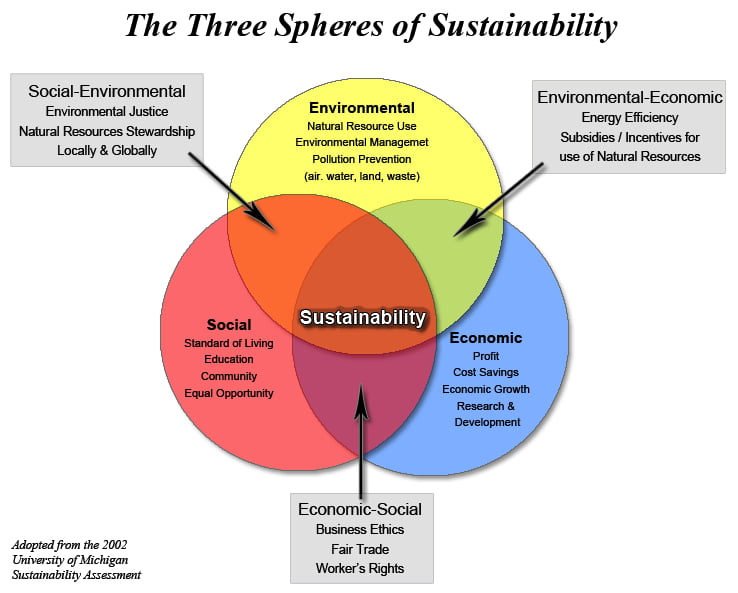Living sustainably has become a hot topic in recent years, and for good reason. We all know that our actions have consequences, but have you ever stopped to think about the consequences of our everyday choices when it comes to sustainable and unsustainable living? It’s time to delve into this important discussion and explore the impacts of our lifestyles on the planet. From the carbon footprint we leave behind to the depletion of natural resources, the consequences of our actions are far-reaching. Let’s take a closer look at what it means to live sustainably and the consequences of failing to do so.
When it comes to sustainable living, it’s all about making choices that minimize harm to the environment and promote long-term ecological balance. From reducing waste and conserving energy to embracing renewable resources, sustainable living is about finding ways to meet our needs without compromising the needs of future generations. On the flip side, unsustainable living is characterized by excessive consumption, wasteful practices, and a disregard for the finite nature of our planet’s resources. The consequences of unsustainable living can be dire, leading to environmental degradation, loss of biodiversity, and the exacerbation of climate change. It’s time to take a closer look at the consequences of both sustainable and unsustainable living, so we can make informed choices that benefit both ourselves and the planet we call home.
Living unsustainably has severe consequences for the environment, economy, and our well-being. It leads to overconsumption of resources, pollution, and habitat destruction, contributing to climate change and loss of biodiversity. On the other hand, sustainable living promotes responsible resource management, renewable energy use, and reduced waste production. It helps mitigate climate change, protects ecosystems, and preserves natural resources for future generations. By adopting sustainable practices, we can create a healthier and more balanced world for ourselves and the planet.

What Are the Consequences of Unsustainable and Sustainable Living?
Living sustainably has become an increasingly important topic in today’s world. As we continue to consume resources at an alarming rate, it is crucial to understand the consequences of unsustainable living and the benefits of adopting a sustainable lifestyle. Unsustainable living practices, such as excessive resource consumption, pollution, and deforestation, have severe repercussions for the environment, economy, and human health. On the other hand, sustainable living practices promote environmental preservation, economic stability, and overall well-being. Let’s explore the consequences of both unsustainable and sustainable living in more detail.
The Consequences of Unsustainable Living
Unsustainable living practices have a profound impact on the environment. One of the most significant consequences is climate change, resulting from the excessive emission of greenhouse gases, primarily carbon dioxide, from burning fossil fuels. This leads to rising global temperatures, melting glaciers, and extreme weather events. The consequences of climate change are far-reaching and include the loss of biodiversity, sea-level rise, and disruptions to ecosystems.
Another consequence of unsustainable living is the depletion of natural resources. With the growing global population and increasing consumption patterns, non-renewable resources such as fossil fuels, minerals, and fresh water are being exploited at an unsustainable rate. This not only threatens the availability of these resources for future generations but also leads to environmental degradation, habitat loss, and water scarcity.
Environmental Pollution
Unsustainable living practices contribute significantly to environmental pollution. The release of pollutants into the air, water, and soil has detrimental effects on human health, wildlife, and ecosystems. Air pollution, primarily caused by the burning of fossil fuels, leads to respiratory problems, cardiovascular diseases, and even premature death. Water pollution, from industrial waste and improper disposal of chemicals, contaminates water sources, making them unsafe for drinking and harming aquatic life. Soil pollution affects agricultural productivity and can lead to the loss of fertile land.
Deforestation is another consequence of unsustainable living. Large-scale logging for timber, agriculture, and urbanization destroys vital forest ecosystems, leading to habitat loss, reduced biodiversity, and increased carbon dioxide levels. Deforestation also contributes to climate change, as trees play a crucial role in absorbing carbon dioxide and releasing oxygen through the process of photosynthesis.
The Benefits of Sustainable Living
Now, let’s shift our focus to the benefits of sustainable living. Adopting sustainable practices can help mitigate the consequences of unsustainable living and create a more harmonious relationship between humans and the environment. One of the primary benefits is environmental preservation. By reducing our carbon footprint, conserving resources, and promoting renewable energy sources, we can contribute to the preservation of ecosystems, protect biodiversity, and mitigate climate change.
Sustainable living also brings economic stability. Investing in renewable energy, energy-efficient technologies, and sustainable agriculture creates new job opportunities and stimulates economic growth. It reduces dependence on fossil fuels and volatile commodity prices, leading to greater energy security and a more stable economy. Additionally, sustainable businesses and practices often attract environmentally conscious consumers, enhancing market competitiveness.
Improved Quality of Life
Another significant benefit of sustainable living is an improved quality of life. By prioritizing sustainable practices, we can reduce our exposure to harmful pollutants, leading to better overall health and well-being. Sustainable agriculture practices that prioritize organic farming and minimize the use of pesticides and synthetic fertilizers enhance food quality and safety. Access to clean air, water, and healthy ecosystems is essential for human health and can lead to a happier and more fulfilling life.
Sustainable living also promotes social equity and justice. By considering the needs of future generations and marginalized communities, we can create a more inclusive and fair society. Sustainable practices such as affordable housing, public transportation, and access to clean energy ensure that everyone has equal opportunities for a sustainable lifestyle.
Conclusion
Understanding the consequences of unsustainable living and the benefits of sustainable living is crucial for building a more sustainable future. By making conscious choices in our daily lives, we can contribute to environmental preservation, economic stability, and overall well-being. It is essential to recognize that our actions have far-reaching consequences and that small changes can make a significant impact. Let us strive towards a more sustainable and resilient world for ourselves and future generations.
Key Takeaways: What Are the Consequences of Unsustainable and Sustainable Living?
- Unsustainable living can lead to environmental degradation and depletion of natural resources.
- Sustainable living promotes conservation and preservation of the environment.
- Unsustainable living practices contribute to climate change and air pollution.
- Sustainable living reduces carbon emissions and promotes clean energy sources.
- Unsustainable living can result in social and economic inequalities.
Frequently Asked Questions
What are the consequences of unsustainable living?
Unsustainable living refers to practices that deplete natural resources, harm the environment, and contribute to climate change. The consequences of unsustainable living are far-reaching and have significant impacts on both the environment and human well-being.
One consequence of unsustainable living is the depletion of natural resources. As we continue to consume resources at an unsustainable rate, we are depleting finite resources such as fossil fuels, minerals, and forests. This not only threatens the availability of these resources for future generations but also disrupts ecosystems and biodiversity.
How does unsustainable living affect the environment?
Unsustainable living practices have a detrimental impact on the environment. One of the key consequences is the emission of greenhouse gases, which contribute to climate change. Activities such as burning fossil fuels for energy, deforestation, and intensive agriculture release significant amounts of carbon dioxide and other greenhouse gases into the atmosphere.
Another consequence is the pollution of air, water, and soil. Unsustainable practices generate pollutants such as toxic chemicals, heavy metals, and plastic waste, which contaminate the environment and harm ecosystems. This pollution can have long-lasting effects on both wildlife and human health.
What are the benefits of sustainable living?
Sustainable living, on the other hand, offers numerous benefits for both the environment and society. One of the key benefits is the conservation of natural resources. By adopting sustainable practices such as reducing waste, conserving energy, and using renewable resources, we can ensure the long-term availability of resources for future generations.
Another benefit is the mitigation of climate change. Sustainable living practices, such as using clean energy sources and reducing carbon emissions, can help slow down the rate of global warming and minimize the impacts of climate change on ecosystems and communities.
How does sustainable living promote a healthier lifestyle?
Sustainable living promotes a healthier lifestyle by encouraging practices that prioritize health and well-being. For example, sustainable agriculture practices focus on organic farming methods, which eliminate the use of harmful chemicals and pesticides. This results in healthier food options that are free from harmful residues.
In addition, sustainable living often involves active transportation, such as walking or cycling, which promotes physical fitness and reduces air pollution. By opting for locally sourced and organic products, individuals can also support sustainable businesses that prioritize the health and well-being of their customers.
What are the long-term benefits of sustainable living?
The long-term benefits of sustainable living are numerous and extend beyond the immediate environmental and health advantages. By adopting sustainable practices, we can create a more resilient and equitable society. Sustainable living promotes economic stability by creating new job opportunities in renewable energy, waste management, and other green industries.
Furthermore, sustainable living fosters community engagement and collaboration. It encourages individuals to come together and work towards common goals, such as reducing waste or conserving water resources. This sense of community can lead to social cohesion and a stronger sense of belonging.

Final Thoughts: The Consequences of Unsustainable and Sustainable Living
As we wrap up this exploration of the consequences of unsustainable and sustainable living, it’s clear that our choices have a significant impact on the world around us. Unsustainable living practices, characterized by overconsumption, pollution, and disregard for the environment, lead to dire consequences. From climate change and habitat destruction to resource depletion and health issues, the negative effects are far-reaching.
On the other hand, embracing sustainable living can bring about positive change and a brighter future. By adopting eco-friendly practices such as reducing waste, conserving energy, and supporting renewable resources, we can mitigate the damage already done and pave the way for a more sustainable planet. Not only does sustainable living benefit the environment, but it also improves our quality of life by promoting healthier lifestyles, fostering stronger communities, and ensuring a more stable and resilient future.
In conclusion, the consequences of unsustainable and sustainable living are starkly different. Unsustainable practices lead us down a dangerous path, threatening the well-being of both our planet and ourselves. Conversely, sustainable living offers hope and a chance to create a harmonious coexistence with nature. The choice is in our hands. Let us embrace sustainable living and work towards a future where balance, preservation, and progress go hand in hand. Together, we can make a lasting and positive impact on our world.

